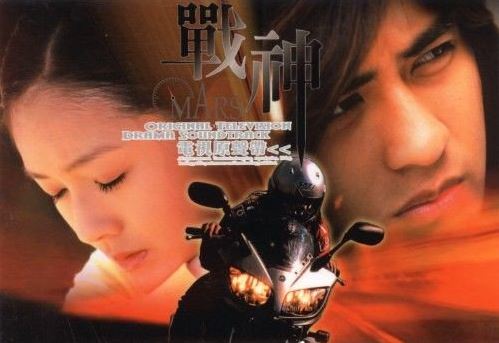Banner of the 2013 Conclave section at the Vatican official site
The intense process of deliberation started with a pre-conclave mass in the morning held at St. Peter's Basilica attended by the Princes of the Church (the official title of the Cardinals) and celebrated by the Dean of the Cardinals, Angelo Scola.
The Conclave, which is traditionally held inside the Sistine Chapel, is an intensely secret process of choosing the next pope. Days before the proper deliberation, workers thoroughly searched the place ensuring no secret cameras and other electronic devices are installed.
According to Vatican News, The Cardinal Electors will remain lock up inside the chapel until the new Roman Pontiff is elected.
The Cardinal Electors will enter the Sistine Chapel at 4:20 in the afternoon.
Before the door closes, there are some traditional ceremonies to be performed inside the chapel first. Cardinal Electors must swear first on the Holy Bible never to reveal their deliberations inside the chapel or face a severe punishment of excommunication from the Catholic Church.
The Princes of the Church known as Cardinals gathered at St. Peter's Basilica for a pre-conclave mass
Wearing their official scarlet robe, the Cardinal Electors entered the Sistine Chapel
They will take their seats based on the order of precedence and will pause for a moment of silence while hearing a meditation prayer established by Apostolic Constitution governing the Papal transitions. The table where they will seat to start the deliberation centers on the image of Jesus Christ so the Cardinals will have to face the gaze of Jesus while casting their vote.
They will swear an oath of obedience and fidelity to the next Pope too, maintain secrecy and never to support favor or interference. After this process, the master of the Papal ceremonies, Msgr. Guido Marini, will order all individuals inside the chapel who are not electors to vacate the place. He then stands at the big wooden door of the chapel pronouncing the phrase "Extra Omnes!" (Everyone Out!) which signals the locking of the door.
The only signal to the world on the progress of the deliberation is a smoke that passes through the chimney atop the Sistine Chapel. A black smoke indicates no pope is elected while a white smoke signals a new pope is elected.
There are three cardinals frequently mentioned in the media as front-runners. Cardinal Scola of Italy, Cardinal Scherer of Brazil and Cardinal Ouellet of Canada. But history of the past Conclaves tell us that the front-runners are not always the one elected. In 1978, Cardinal Karol Wojtyla of Poland was not a front-runner, in fact he was not mentioned as one of the favorites, he was young (only 58) and came from a communist country, but the Cardinal Electors of the 1978 Conclave saw greatness in him and guided by the Holy Spirit, Wojtyla secured votes on the second balloting and proclaimed Pope John Paul II.
There were 8 Conclaves held in the 20th century and only three of these elections lasted longer than 3 days. In 2005, Pope Benedict XVI was elected on the second day of the Conclave while Pope Pius XII was elected in 1939 with just 3 ballots.
The Sistine Chapel
Every Roman Catholic dreamed to visit this grand chapel, I, myself is wishing and hoping I could visit this place one of these days. It is located inside the Vatican and arguably one of the most elegant and thought-pondering structures in the world. Upon entering the place, according to Vatican site, you will be greeted with Theological riddle of images and representations.
It is very famous for its delicately carved decorations of religious figures and fascinating images which were designed and created through fresco, a technique of mural (painted or directly applied on the wall) painting executed upon freshly laid lime plaster. Its ceiling was personally designed by Michaelangelo depicting the Last Judgement and thought to be Michaelangelo's masterpiece.
The chapel was named after Pope Sixtus IV who also celebrated the first mass at the chapel on August 9, 1483 during the feast of our Lady of Assumption but its architectural design was made under the patronage of Pope Julius II.
The chapel was named after Pope Sixtus IV who also celebrated the first mass at the chapel on August 9, 1483 during the feast of our Lady of Assumption but its architectural design was made under the patronage of Pope Julius II.
The Last Judgment, an imposing canonical fresco of Italin artist, Michaelangelo,
that dominated the ceiling of Sistine Chapel.
The chapel hosted religious and functionary papal activities including the Conclave of the College of Cardinals that would elect a new Pope. Sistine is surrounded with extraordinary theological scriptural riddle accomplished by the best Italian artists during the Renaissance period. Other images in the chapel include the depiction of Old and New Testaments, the Heavenly Father who divides the light from darkness
Scenario at the Sistine Chapel
The chapel, as with the rest of the Vatican City, is protected by the Swiss Guards, the official guards of the Roman Pontiff. The moment Cardinal Electors enter the chapel, the door will be locked and would not open until the new pope is elected.
As the electors enter this sacred place, the first thing they will see is the "Handing of the Key" image designed by Italian artist, Pietro Perugino. The Handing of the Key image depicts Jesus Christ entrusting the Kingdom of God to His Vicar, St. Peter. The image represents harmony, peace, deep silence and solemnity which also signifies the image of a Roman Pontiff--majestic simplicity and striking naturalness.
All these representations melted in the air when the Cardinal Electors dart their eyes above the ceiling as they will see the Last Judgment, the depiction of the Second Coming of Christ where St. Peter returns the key to Jesus Christ. The images include the souls of humans rise and descends to their fates as judged by Christs and surrounded with saints, angels and demons who fight for the souls of the resurrected and the fire and hell.
The most striking fresco in the chapel is perhaps the whirlwind of angels in flight carrying the instruments of the passion: The Pillar of the Scourging, the Cross and the Crown of Thorns. This fresco will serve as a terrifying warning and reminder to the Cardinal Electors about the gravity of their responsibility.
SOURCES: Yahoo!News and Vatican official website














0 Comments